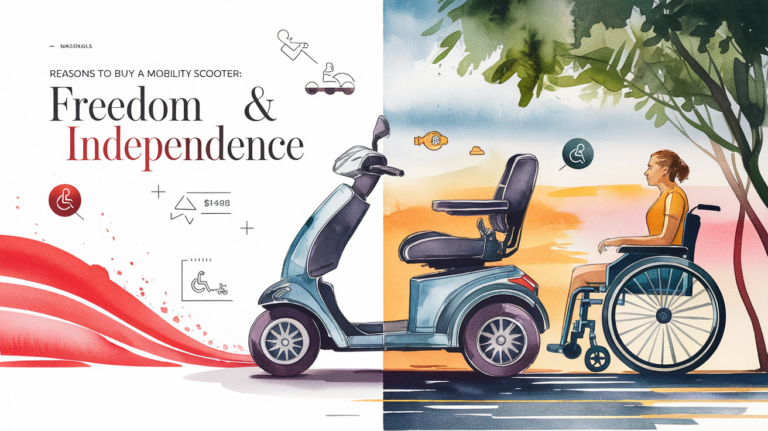Red Light Therapy for Chronic Pain (Inflammation & Arthritis)

What Is Red Light Therapy For Chronic Pain?


Red light therapy can reduce and even eliminate chronic pain. My physical therapist uses it daily (calling it by its fancy scientific name, photobiomodulation) with impressive results.
The beauty of red light therapy is that it’s non-invasive, drug-free, and available without a prescription. It’s safe, thoroughly tested, and—best of all—effective! Here’s what happens when you use red light therapy for chronic pain:
- Increased cellular energy promotes healing
- Blocking of pain sensitivity in the nerves
- Increased blood flow reduces inflammation and promotes healing
- Reduced inflammation lessens the harmful biological activity
- Increased collagen and elastin help rebuild soft tissue
Chronic Pain Ruins Lives
Chronic pain:
- Disrupts sleep
- Causes emotional problems
- Reduces social activities
- Changes the appetite
- Can cause anxiety and depression
- Should be addressed and not ignored
Chronic pain is a sneaky villain that can wreak absolute havoc on your life. It’s that persistent discomfort that sticks around for more than 12 weeks and often hangs on long after an injury has healed or a medical condition has been treated.
Unlike acute pain (which politely leaves after a few days or weeks), chronic pain is that unwanted houseguest who just won’t go home. It can affect any part of your body, ranging from mildly annoying to completely debilitating, making even simple tasks feel like climbing Mount Everest.
Living with chronic pain is like carrying a heavy backpack you can never take off—it weighs down your physical, emotional, and social well-being. It disrupts sleep, kills your appetite, and can lead to anxiety and depression.
Types of Chronic Pain
Chronic pain isn’t a one-size-fits-all villain—it comes in several forms, each with its own characteristics.
Neuropathic pain is that burning, tingling, or shooting sensation that feels like your nerves are having their own little electrical storm. It happens when your nervous system gets damaged or starts misbehaving, and it can be particularly stubborn to treat.
Musculoskeletal pain targets your muscles, bones, and joints—the structural framework of your body. This pain ranges from “Hmm, that’s uncomfortable” to “I can’t move without wanting to cry,” and can seriously impact your day-to-day activities.
And then there’s visceral pain, which originates in your internal organs. It typically presents as a deep, persistent ache that can be especially tricky for doctors to pinpoint and treat.
Causes and Symptoms of Chronic Pain
Chronic pain can arise from physical injuries and medical conditions like arthritis or fibromyalgia, or even psychological factors such as stress, anxiety, and depression. Sometimes chronic pain has a clearly identified culprit, but other times it seems to appear out of nowhere.
Beyond physical and medical factors, your lifestyle and environment might be silent accomplices. A sedentary lifestyle or poor nutrition can set the stage for chronic pain. Even environmental toxins or pollutants might be playing a supporting role in your pain story.
Depending on what’s causing it, you might experience a dull, persistent ache or sharp, lightning-bolt pain. You might also notice stiffness, soreness, or a burning sensation in the affected area, along with fatigue that makes ordinary tasks challenging.
Chronic pain doesn’t just affect your body—it spills over into your emotional and mental well-being, too. You might experience mood swings that include irritability, anxiety, or depression, making it hard to maintain your quality of life. And don’t be surprised if your sleep patterns suffer, leaving you exhausted and struggling to function.
Pros And Cons Of Conventional Chronic Pain Remedies


Medications, physical therapy, and surgery can be effective at reducing pain. Ibuprofen certainly helps my stubborn hip pain, but I’m not exactly thrilled about that “may cause severe stomach bleeding” warning on the bottle!
Medications for Chronic Pain
Medications can provide quick relief for pain symptoms. But before you reach for those pills, it’s worth understanding their limitations. Opioids can effectively tame pain and inflammation, but they also come with significant risks of addiction and overdose—not something to take lightly.
Then there are NSAIDs and acetaminophen, which help manage pain but might bring unwanted side effects like drowsiness, nausea, and stomach bleeding. Take Tylenol (acetaminophen), for instance—it’s great for pain relief but also happens to be a leading cause of liver failure in the United States. That’s definitely something to consider when planning your pain management approach.
Physical Therapy Benefits
I’m a huge fan of physical therapy. I’ve logged countless hours with amazing physical therapists who’ve helped me regain mobility and reduce pain. Physical therapy offers a medication-free approach that addresses the root causes of pain rather than just masking symptoms.
The personalized exercises and techniques can strengthen weak areas, improve flexibility, and teach proper body mechanics to prevent future pain. Plus, the education you receive empowers you to take control of your own healing journey.
However, physical therapy requires commitment and consistency. Results often take time to appear, which can be frustrating when you’re in pain. It also requires active participation—you can’t just passively receive treatment and expect improvement. The exercises might temporarily increase discomfort, and insurance coverage can sometimes be limited.
How Red Light Therapy Works for Pain Relief

Red light therapy uses specific wavelengths of light (typically 630-660nm and 810-850nm) that penetrate the skin and are absorbed by cells. This isn’t just any light—it’s precisely calibrated to trigger biological responses that reduce pain and promote healing.
When these light photons reach your cells, they’re absorbed by the mitochondria—your cellular power plants. This stimulates the production of adenosine triphosphate (ATP), which is essentially your body’s energy currency. With more ATP available, cells function more efficiently and repair processes accelerate.
The therapy also increases blood circulation to damaged tissues, bringing oxygen and nutrients while removing waste products. Additionally, it reduces inflammation by decreasing pro-inflammatory cytokines and increasing anti-inflammatory cytokines, creating a more balanced healing environment.
Scientific Evidence Supporting Red Light Therapy
The research supporting red light therapy for pain relief is substantial and growing. A 2019 meta-analysis published in the Journal of Pain Research examined 18 clinical trials and found that photobiomodulation (red light therapy) consistently reduced pain scores across various chronic pain conditions.
Another study in the European Journal of Physical and Rehabilitation Medicine demonstrated significant pain reduction and improved function in patients with knee osteoarthritis after regular red light therapy sessions.
Research published in the Archives of Physical Medicine and Rehabilitation showed that red light therapy reduced pain by up to 50% in patients with chronic neck pain, with improvements lasting several months after treatment ended.
What makes these findings particularly compelling is that red light therapy achieved these results without the side effects associated with medications or the risks of surgical interventions.
Best Red Light Therapy Devices for Home Use

The good news is you don’t need to visit a clinic to benefit from red light therapy. Many effective devices are now available for home use, ranging from handheld wands to full-body panels.

For both osteoarthritis and rheumatoid arthritis, research shows red light therapy may:
- Reduce joint swelling
- Improve range of motion
- Slow cartilage degradation
- Decrease morning stiffness
A 2018 study found that knee osteoarthritis patients who received red light therapy twice weekly reported significantly less pain and better function compared to control groups. While it won’t completely restore joint function, it might help with everyday movements that have become challenging.
Back Pain and Red Light Therapy: Illuminating Relief

Back pain affects people from all walks of life, regardless of occupation or lifestyle. Red light therapy for chronic back pain works by:
- Reducing muscle spasms
- Decreasing inflammation around pinched nerves
- Supporting tissue repair
- Enhancing blood flow
For sciatica specifically – that radiating pain that can make sitting, standing, and lying down uncomfortable – studies show red light therapy can help reduce inflammation around the affected nerve roots, potentially providing relief where other treatments have failed.
Fibromyalgia and Red Light Therapy: Help for Invisible Pain

Fibromyalgia, with its widespread pain and fatigue, can be particularly challenging to treat. However, several clinical trials with red light therapy show promise:
- Reduced widespread pain
- Improved sleep quality
- Decreased fatigue
- Enhanced quality of life
A 2019 study found that fibromyalgia patients receiving twice-weekly red light therapy for 10 weeks experienced significant improvements compared to control groups. This offers hope for a condition that often responds poorly to conventional treatments.
Neuropathic Pain: Calming Overactive Nerves

Neuropathic pain – that burning, tingling, electrical sensation – can be particularly resistant to treatment. Red light therapy may help your troubled nerves by:
- Protecting nerve cells from further damage
- Supporting nerve regeneration
- Reducing inflammation around nerve tissues
- Modulating pain signaling pathways
Research on diabetic neuropathy shows particularly promising results, suggesting that red light therapy might help restore more normal sensation and reduce pain in affected areas.
What to Expect During Red Light Therapy Treatment

Red light therapy sessions are surprisingly simple and comfortable. During a typical session:
- You’ll sit or lie down near the light device
- The red light will be positioned over your target treatment area
- You’ll relax for 10-20 minutes while the light works
- You might feel gentle warmth but no burning or discomfort
- You can resume normal activities immediately afterward
Most protocols recommend 2-3 sessions weekly for 4-12 weeks to start seeing results. Many people notice some improvement after just a few sessions, but the benefits tend to build over time with consistent use.
The Research Behind Red Light Therapy
The scientific evidence for red light therapy is surprisingly robust. A 2019 meta-analysis in the Journal of Pain Research examined 18 clinical trials and found that red light therapy significantly reduced pain scores across multiple conditions.
The evidence for musculoskeletal pain shows:
- Pain reductions of 30-50%
- Improvements that last weeks to months
- Benefits even for treatment-resistant cases
Let’s explore how this works for specific pain conditions!
Professional vs. Home Treatment Options
You have two main options for trying red light therapy: professional treatments or home devices. Each has its advantages depending on your situation.
Professional treatments typically offer:
- Higher-powered devices with professional-grade light intensity
- Proper positioning and treatment protocols
- Combination with other therapies
- Expert guidance on session frequency and duration
Home devices provide:
- Convenience for regular use
- Lower cost over time
- Ability to treat on your own schedule
- Options ranging from handheld devices to panels and wraps
If you’re new to red light therapy, starting with a few professional sessions might help you determine if it’s effective for your specific pain before investing in a home device.
Is Red Light Therapy Right for Your Chronic Pain?
While research supports red light therapy for many types of chronic pain, it’s not a miracle cure. It works best when incorporated into a comprehensive pain management plan that might include:
- Physical therapy and gentle movement
- Stress management techniques
- Proper nutrition and hydration
- Quality sleep optimization
- Carefully selected medications when necessary
Red light therapy has minimal side effects and drug interactions, making it a reasonable option to try alongside other treatments. Always consult with your healthcare provider before starting, especially if you have light-sensitive conditions or take photosensitizing medications.
Living with chronic pain is challenging, but innovative approaches like red light therapy offer new possibilities for relief. Whether you’re dealing with arthritis, back pain, fibromyalgia, or neuropathic discomfort, this gentle light-based therapy might help illuminate your path to better days with less pain.






